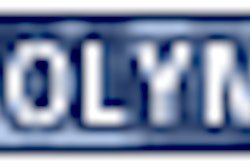
SALT LAKE CITY - The relentless pressure to cut costs finds many radiologic technologists arriving at their jobs each day to face a staggering workload of patients. The Olympic Polyclinic uses a catch-as-catch-can strategy for exam scheduling, but the load is generally lighter than a workaday shift, according to Todd Russell, MRI technologist.
"My day-to-day workload (17-20 patients for MR imaging per shift) sometimes translates to settling for good images from the modality, when my desire is always to get great images. At the Polyclinic, where we’ve been averaging approximately 10 patients per shift, I’ve got the time to go for the best possible image every time," he said.
 |
| Todd Russell, MRI technologist at the Olympic Polyclinic, prepares the MR suite for a knee exam. |
Russell, a radiology team coordinator at MountainStar Healthcare’s St. Mark’s Hospital in Salt Lake City, is a CT, MR, and x-ray technologist. He was trained as a radiologic technologist at Salt Lake Community College, and went on to earn a bachelor’s degree in health administration with minors in MRI and CT from Weber State University in Ogden, UT.
The Signa Infinity EchoSpeed MR system (GE Medical Systems, Waukesha, WI) at the Polyclinic is the same one in use at St. Mark’s, including the 9.0 iteration of the software, so Russell was able to hit the ground running from his first shift.
Although the technology at the Polyclinic held no surprises for him, working with the radiologists here has exposed Russell to some new imaging protocols. "All the doctors I’ve worked with have been very familiar with the GE unit, so they’ve been putting it through its paces," he said.
"I’ve been imaging a lot of knees, right knees mostly, with ACL (anterior cruciate ligament) and PCL (posterior cruciate ligament) damage and meniscal tears," Russell said. "What has been interesting is the technique variations that each radiologist on duty has been ordering. I’ve been doing a lot more inversion recovery vs. the fat saturation imaging that I normally perform, and we’ve lowered the echo train. The result has been images of outstanding quality, with incredible detail."
By Jonathan S. Batchelor
AuntMinnie.com staff writer
February 24, 2002
Copyright © 2002 AuntMinnie.com


















